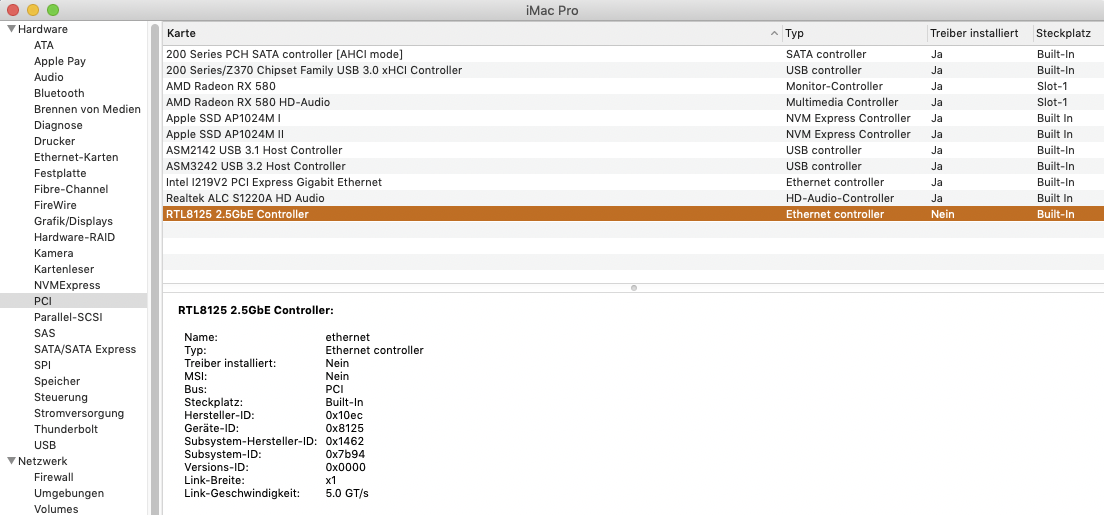Realtek Wireless Driver for Windows 10 (64-bit) - ThinkPad E480, E580 - version 2024.0.5.103; Do a ping test again and if the same issue, change Bandwidth setting under Advanced driver properties of the device manager from 80Mhz40Mhz20Mhz to 40Mhz20Mhz. I hope this helps answer your query. Update us how it goes.
- Realtek Adapters are very common in consumer hardware and SFF systems. Using SFF systems to run ESXi is a good option for home labs as they are inexpensive and have a low power consumption. Unfortunately, the Realtek RTL8168, which is used in Asus PN50 or ZOTAC ZBOX Edge for example, is not supported in ESXi.
- A library of over 250,000 device drivers, firmware, BIOS and utilities for Windows.
I couldn't figure out what the problem is , and did not spend much time either. But I ended up with installing the driver provided by the Realtek and it seems to be opensource(or at least parts of it is GPL2+) and last updated 2020/03/11 !
Realtek Scsi & Raid Devices Driver Download Windows 7
it is mentioned ' FE Ethernet LINUX driver for kernel up to 4.15 ' but seems to work under 5.4.30-1.

the installation process was straightforward , just extracted the r8101-1.035.02.tar.bz2 and :
It seems to work just fine for now (will update if anything goes south)
I blacklisted all three modules libphy , realtek , r8169 .
Notice the patents.
I am going to test it for the time being and see what happens when the new LTS kernel upgrade is available.
Thanks for your help loqs I've learned so much from you .
PS:
If you want to investigate the problem any further I will be happy to assist.
PSPS:
There is an AUR package named r8101-dkms , haven't test it yet but worth mentioning since it is DKMS .
Last edited by behnamgolds (2020-04-07 09:34:09)
Realtek Adapters are very common in consumer hardware and SFF systems. Using SFF systems to run ESXi is a good option for home labs as they are inexpensive and have a low power consumption. Unfortunately, the Realtek RTL8168, which is used in Asus PN50 or ZOTAC ZBOX Edge for example, is not supported in ESXi. The problem can be solved with a community created driver in ESXi 5.x and 6.x but not in ESXi 7.0, due to the VMKlinux driver stack deprecation.
You can work around the problem by using an USB based NIC to manage ESXi. Using USB NICs works fine and stable, but at this point the embedded NIC is useless. If you want to use it, you can use passthrough to add it to a virtual machine.
Enable Passthrough
- Open the vSphere Client, navigate to ESX > Configure > Hardware > PCI Devices and click CONFIGURE PASSTHROUGH.
- Locate Realtek network card and activate it for passthrough.
- Power-off the Virtual Machine where you want to add the network card.
- Right-Click the Virtual Machine and select Edit Settings...
- Click ADD NEW DEVICE and select PCI Device
- Add the Network Adapter
- Boot the Virtual Machine
- Verify that you can see the Network Adapter
You do now have a dedicated network card in your virtual machine. This gives you full performance PCIe network card performance in your virtual machine. Of course, you can only pass it to one machine, unless you take it a step further and...

Create a Bridge to pass the Network back to ESXi
If you want to use the same network card with other virtual machines, or VMkernel interfaces, you can pass it back to a vSwitch by creating a bridge.
- Create a new vSwitch with no physical network adapters.
- Add a VMkernel Port
- Add a VM Portgroup named bridge and connect the Virtual Machine
- Edit the vSwitch and set Promiscuous Mode to Accept.
- In this example, I'm using a Windows machine to create the Bridge. Scroll down for a Linux bridge configuration example.
Open Network Connections, mark both Adapters, Right-Click and click Bridge Connections. - You have now created a bridge that connects the vSwitch to the Realtek NIC. If you want to configure an IP address for the virtual machine, you have to set it on the new bridge interface.
- If you are using the bridge to manage ESXi, make sure to configure auto-boot for the bridging virtual machine. (ESXi > Configure > Virtual Machines > VM Startup/Shutdown). Keep in mind that auto-boot only works for standalone ESXi Hosts or hosts that are in a not HA enabled Cluster.
You should now be able to connect to the Virtual Machine (DHCP) and the VMkernel port (192.168.111.21). To make other Virtual Machines accessible, add them to the bridge Port Group on vSwitch1.
Create a Bridge on Debian based Linux
If you want to use a lightweight VM for bridging, you can use Linux. Adding a bridge in Linux is as simple as in Windows:
Install bridge-utils
Configuring bridging in /etc/network/interfaces
Restart networking or reboot the virtual machine. You can verify the bridge status with brctl show.
Share:
Related posts:
- ESXi 5.1 - ESXCLI Command Mindmap
- ESXi 5.5 - ESXCLI Command Mindmap
- ESXi on AMD Ryzen based ASUS PN50
- Ping from specific VMkernel adapter in vSphere 6
- Migrate E1000 Adapter to vmxnet3 with Linux Virtual Machines
2 thoughts on “Realtek NIC and ESXi 7.0 - Use Passthrough to make use of the Adapter”
BartRealtek Scsi Definition
How clever!
Direct passthrough and bridge enabling, I am really impressed. With your out-of-the-NUC thinking.
Realtek Scsi Driver
